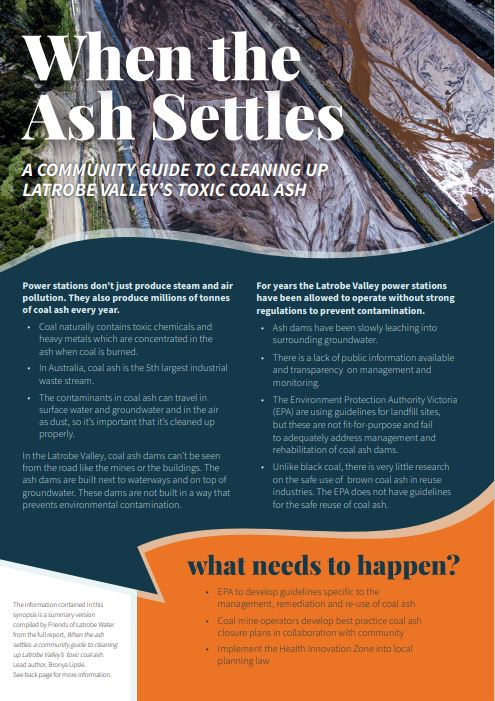COAL ASH
Power stations don’t just produce steam and air pollution. They also produce millions of tonnes of coal ash every year, which makes its way into coal ash dams.
In the Latrobe Valley, ash dams are built next to waterways and on top of groundwater.
These dams are not built in a way that prevents environmental contamination.
Coal ash contains highly concentrated amounts of the same toxic contaminants and heavy metals that are found in coal, such as mercury, lead, arsenic and cadmium.
The contaminants in coal ash can travel in surface water and groundwater and in the air as dust, so it’s important that it’s cleaned up properly.
For years the Latrobe Valley power stations have been allowed to operate without strong regulations. Poorly constructed dams are slowly leaching into surrounding groundwater.
The Environment Protection Authority Victoria (EPA) are using guidelines for landfill sites, but these are not fit-for-purpose and fail to adequately address management and rehabilitation of coal ash dams and do not to keep our community and environment safe.
Cleaning up after over 100 years of mining is an important part of a just and fair transition and it must come before we can begin to rehabilitate these mines.
So what does best practice coal ash dam closure planning look like?
We’ve been working with experts in coal ash dam law and regulation at Environmental Justice Australia to develop a detailed plan.


